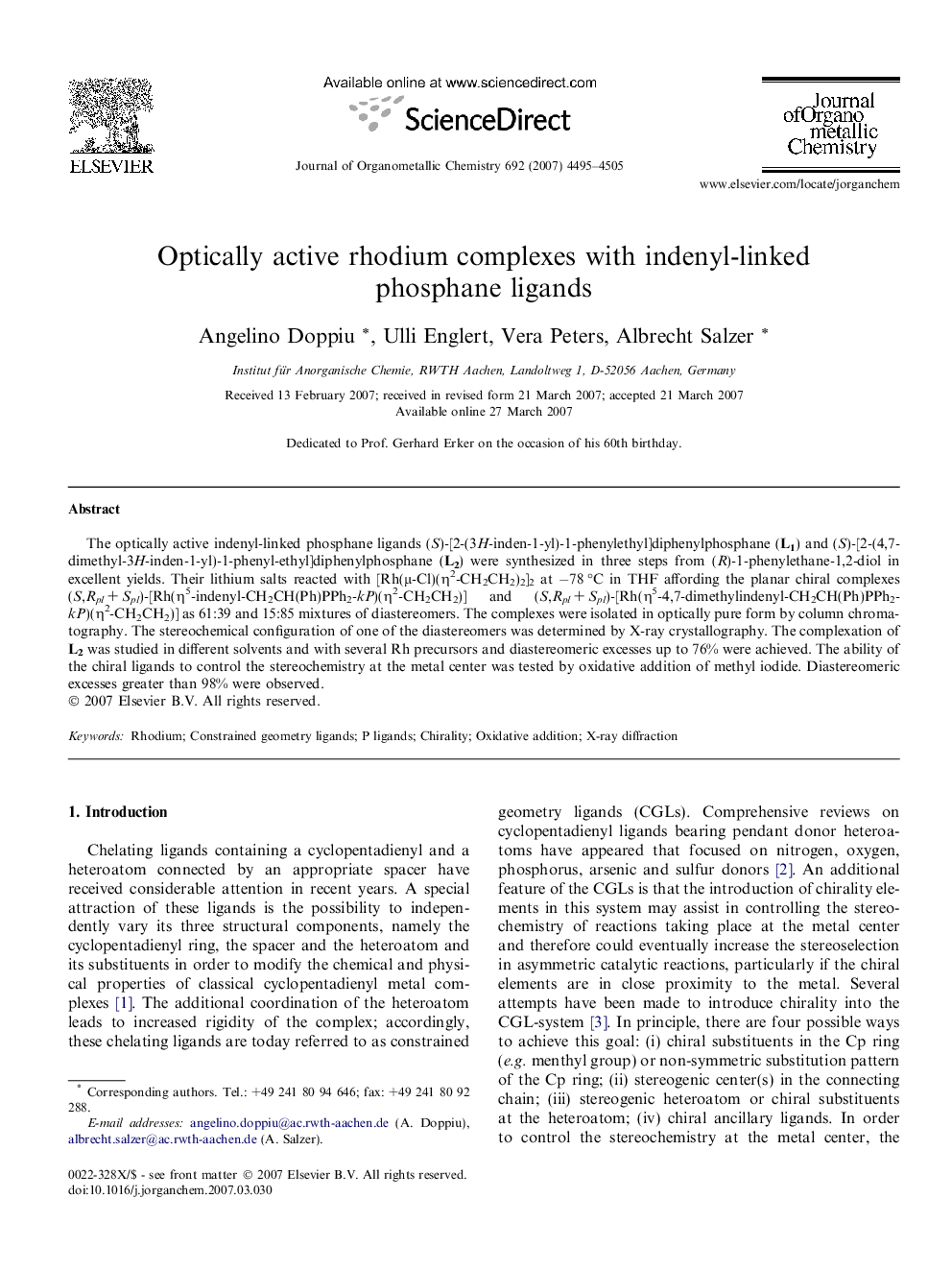| Article ID | Journal | Published Year | Pages | File Type |
|---|---|---|---|---|
| 1328203 | Journal of Organometallic Chemistry | 2007 | 11 Pages |
The optically active indenyl-linked phosphane ligands (S)-[2-(3H-inden-1-yl)-1-phenylethyl]diphenylphosphane (L1) and (S)-[2-(4,7-dimethyl-3H-inden-1-yl)-1-phenyl-ethyl]diphenylphosphane (L2) were synthesized in three steps from (R)-1-phenylethane-1,2-diol in excellent yields. Their lithium salts reacted with [Rh(μ-Cl)(η2-CH2CH2)2]2 at −78 °C in THF affording the planar chiral complexes (S,Rpl + Spl)-[Rh(η5-indenyl-CH2CH(Ph)PPh2-kP)(η2-CH2CH2)] and (S,Rpl + Spl)-[Rh(η5-4,7-dimethylindenyl-CH2CH(Ph)PPh2-kP)(η2-CH2CH2)] as 61:39 and 15:85 mixtures of diastereomers. The complexes were isolated in optically pure form by column chromatography. The stereochemical configuration of one of the diastereomers was determined by X-ray crystallography. The complexation of L2 was studied in different solvents and with several Rh precursors and diastereomeric excesses up to 76% were achieved. The ability of the chiral ligands to control the stereochemistry at the metal center was tested by oxidative addition of methyl iodide. Diastereomeric excesses greater than 98% were observed.
Graphical abstractThe complexation of (S)-[2-(4,7-dimethyl-3H-inden-1-yl)-1-phenylethyl]diphenylphosphane with [Rh(μ-Cl)(η2-CH2CH2)2]2 affords the two diastereomers (S,Rpl)-Rh3 and (S,Spl)-Rh4 in a ratio that depends strongly on the solvent. The complexes undergo oxidative addition of CH3I with high diastereoselectivity.Figure optionsDownload full-size imageDownload as PowerPoint slide
